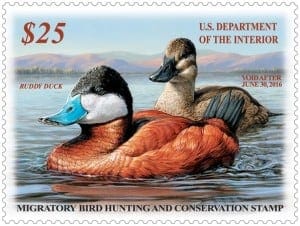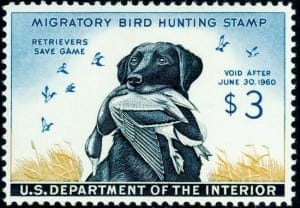Early in the morning, many times just after the sun makes its appearance; you may hear the loud cracking of a shot gun during this season of hunting. Men, women, and even some young hunters will wake up early, sit quietly for long hours in a blind and wait for their prize to appear.
You may wonder why I am writing about hunting and how TNI can be ok with it. Well, it may surprise you to hear that hunters are some of the most loyal conservationists. When you take the time to think, it makes sense. A hunter must be willing to save the habitat that allows his prey to live in order to continue doing what he or she loves. The best example of this relationship between hunter and conservation is the Federal Duck Stamp. On Cornell University’s Bird Academy site, there is an article titled, “How Hunters and Artists Helped Save North America’s Waterfowl”. It is a great read and explains in detail how the Federal Duck Stamp works.
At the turn of the century, there was no specific season on waterfowl and the numbers of all species of duck, geese and teal were very low. Something needed to happen to save these species. The Migratory Bird Treaty was signed in 1916 and put a season on migratory waterfowl and game species, which set in play laws that would protect the birds from over hunting. The treaty was a great first step, but it did not have the economic support for enforcement. The Duck Stamp Act provided that funding.
The Migratory Bird Hunting Stamp Act (more commonly called the Duck Stamp Act) was passed in 1934. All waterfowl hunters, 16 and older, are required to purchase a stamp and carry it along with their general hunting license and the fee for the stamp is set aside to secure and manage land used by migratory waterfowl populations. The National Wildlife Refuge is a system that is directly impacted by the duck stamp. The funds were used to help set aside over 150 million acres dedicated to wildlife. In addition to the duck stamp providing funds for conservation efforts, the Pittman-Robertson Act, a tax on ammunition, helps state governments manage their wildlife. Ducks Unlimited, a private non-profit organization, was started to raise more money for waterfowl conservation. It is now considered the world’s leader in waterfowl and wetland conservation fundraising. It was started three years after the Duck Stamp Act and it strengthens the connection between waterfowl hunters and conservation.
The Duck Stamp also has a history with TNI. One of the most famous Duck Stamp designs is connected to John M Olin. Olin owned most of what is now TNI property. The stamp connected to Mr. Olin is the only stamp with a dog as the subject. John Olin’s Black Lab, King Buck, was one of the greatest retrieving dogs in the US and was the subject of Maynard Reece’s 1959 Duck Stamp design. After outrage over a dead duck being shown on the stamp the rules for the art contest were changed so that only waterfowl species can be on the stamp. King Buck was the first and will be the only dog to ever grace the face of the duck stamp.
Originally, Duck Stamps sold for $1 each. Today you can buy one for $25. Out of the revenue received, 98% is used to secure habitat used by waterfowl. Waterfowl hunting was the number one cause of waterfowl population decline. Now, almost 100 years later, more than $850 million has been raised for habitat conservation. Waterfowl hunters and other concerned citizens are providing the funds to protect these same species. Even if you do not desire to hunt ducks and geese you can purchase a duck stamp to continue this great conservation effort.
Ramona Puskar, Education Assistant



Leave A Comment